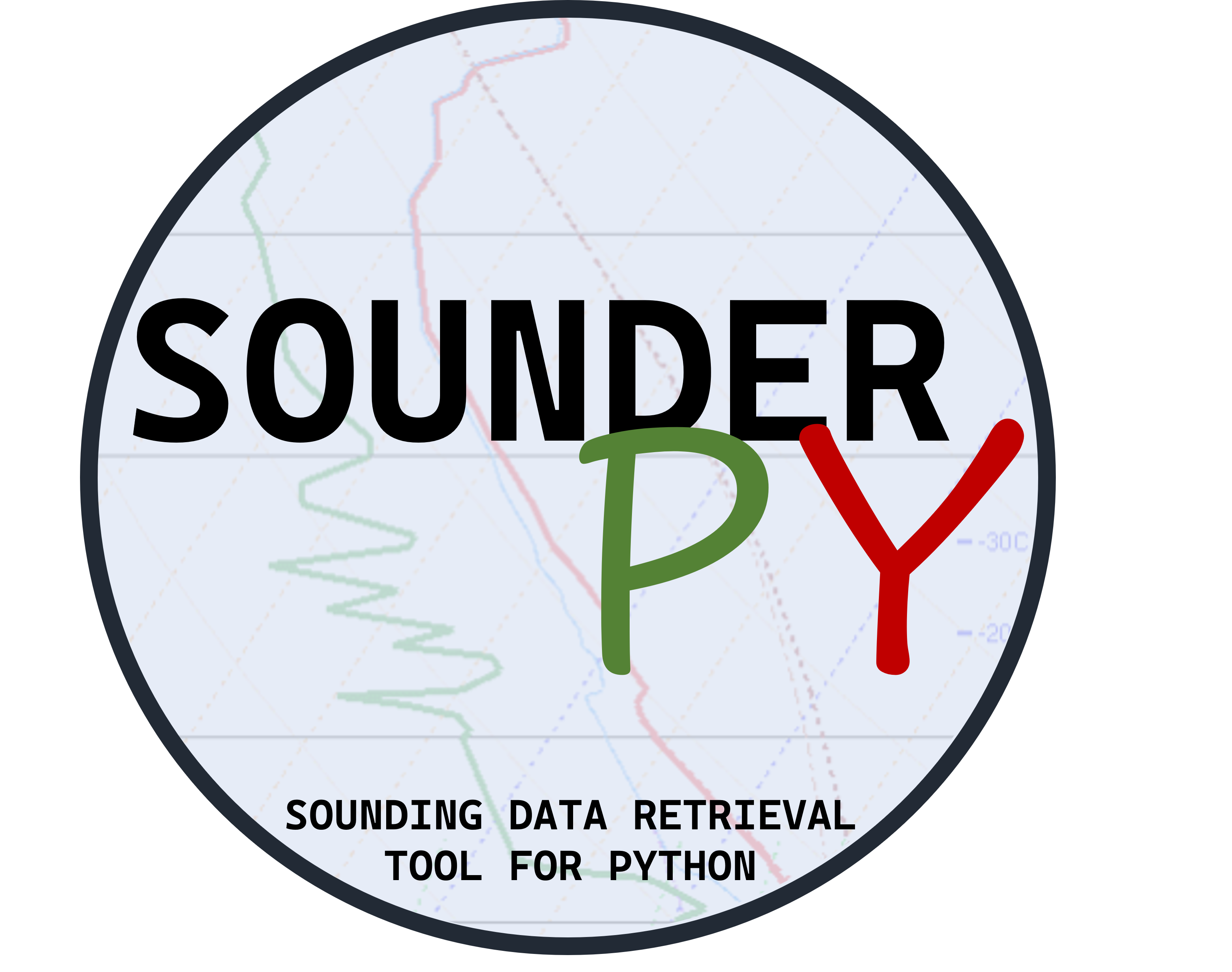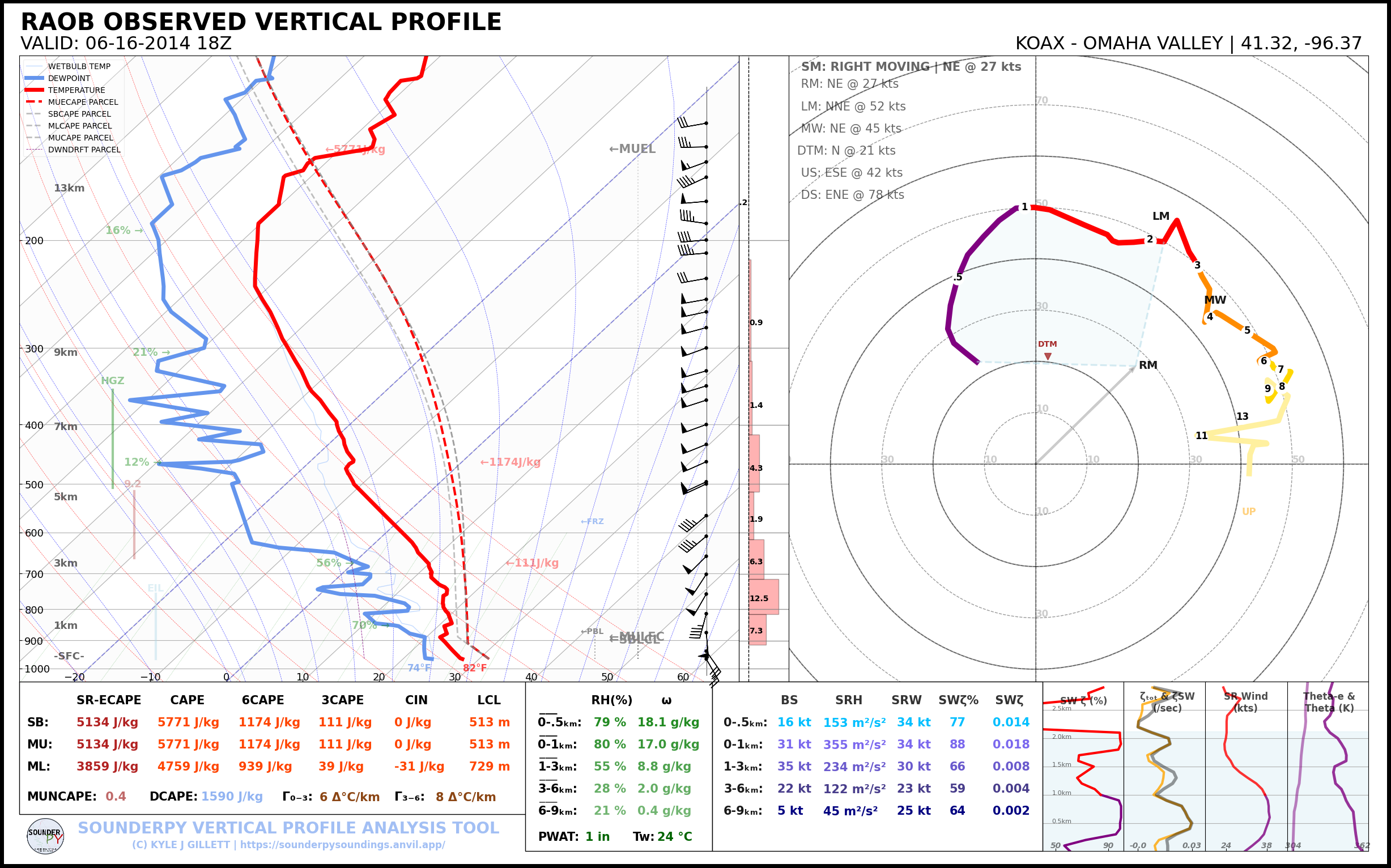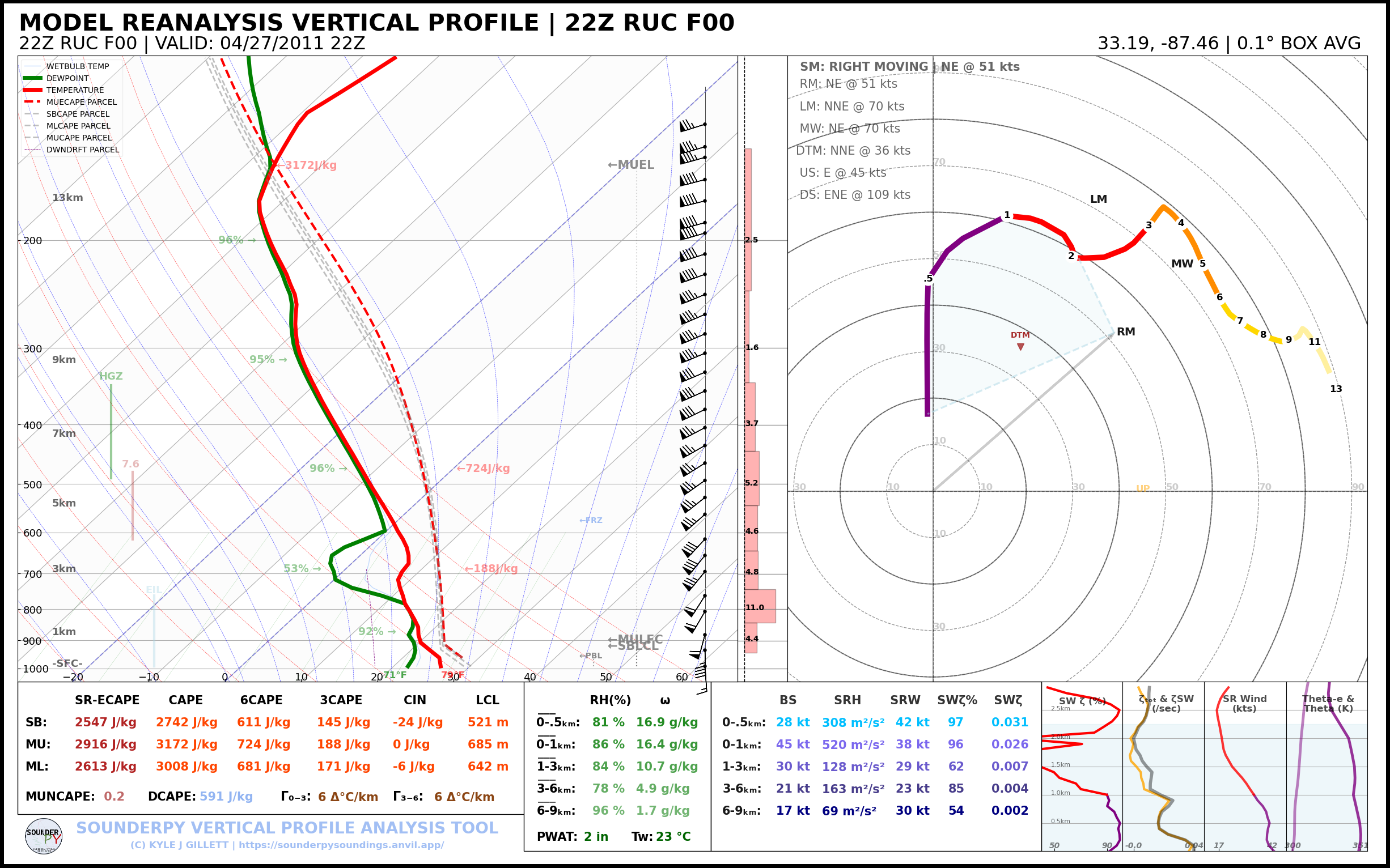Sounding Data Retrieval & Plotting Tool for Python
LATEST RELEASE: v3.0.2, Mar. 2024


What is SounderPy?
SounderPy is an open-source atmospheric science Python package for meteorological analysis of soundings. This tool is designed to load data, ‘clean it up’ for simple use, and plot the data on advanced-sounding plots. SounderPy was developed with the goal in mind to keep the code simple and efficient for users of all experience levels and for reliability in all use cases.
SounderPy has been used by several institutions. For example, this tool has been implemented by the Des Moines, Columbia, and Grand Rapids National Weather Service Offices, the State University of New York at Albany, Mississippi State University, the University of North Dakota, and others. Many students at various universities have used SounderPy in projects and papers, such as students at Ohio State University, Central Michigan University & Rizal Technological University.
SounderPy: A sounding visualization tool for severe-weather analysis and forecasting
ABSTRACT: SounderPy is a simple, open-source Python package for retrieving and plotting vertical profile (sounding) data. Built for simplicity and reliability for all uses and users, this project’s goal is to provide a uniform method for sounding analysis across multiple data types. Severe weather analysis and forecasting requires a sound comprehension of thermodynamic and kinematic properties of the environment. SounderPy makes this possible with robust access to data and custom visualizations. The tool creates complex yet effectivesounding and hodograph plots with high readability which are designed specifically for severe weather analysis and forecasting. SounderPy is capable of retrieving and plotting model forecast data, observed radiosonde data, Aircraft Communications Addressing and Reporting System (ACARS) observation data, and model reanalysis data. All of this functionality can be completed in three simple lines of code or less, making SounderPy an accessible tool for both Python experts and novices. A number of scientific Python libraries build the base of SounderPy’s efficient and durable functionality, such as NumPy, Matplotlib, xarray, Metpy, and SHARPpy. SounderPy is available through GitHub and PyPi and is distributed under an MIT license.



Why SounderPy?
- Sometimes data is tough to find, and often times it’s even tougher to get it in the format you like. SounderPy gets you this data!
- The code needed for loading and parsing meteorological data, especially from models, can be large and messy. SounderPy keeps it hidden away in a PyPi package – just import and call sounderPy functions to keep your code clean!
- SounderPy functions are designed to be simple and quick, making for reliable use in research, forecast/analysis operations, and simply for fun!
As of version 3.0.0+, SounderPy is capable of retrieving and plotting model reanalysis data, model forecast data, observed radiosonde data, & Aircraft Communications Addressing and Reporting System (ACARS) observation data. Plotting sounding data with SounderPy offers complex sounding and hodograph figures with unique design and high readability. A number of scientific Python libraries build the base of SounderPy’s efficient and durable functionality, such as NumPy, Matplotlib, xarray, & MetPy. SounderPy is available through GitHub and PyPi and is distributed under an MIT license
References
- Harris, C.R., Millman, K.J., van der Walt, S.J. et al. Array programming with NumPy. Nature 585, 357–362 (2020). DOI: 10.1038/s41586-020-2649-2.
- Hoyer, S. & Hamman, J., (2017). xarray: N-D labeled Arrays and Datasets in Python. Journal of Open Research Software. 5(1), p.10. DOI: https://doi.org/10.5334/jors.148
- Hunter, “Matplotlib: A 2D Graphics Environment”, Computing in Science & Engineering, vol. 9, no. 3, pp. 90-95, 2007.
- Ryan M. May, Sean C. Arms, Patrick Marsh, Eric Bruning, John R. Leeman, Kevin Goebbert, Jonathan E. Thielen, Zachary S Bruick, and M. Drew. Camron. Metpy: a Python package for meteorological data. 2023. URL: Unidata/MetPy, doi:10.5065/D6WW7G29.
- Ryan M. May, Sean C. Arms, John R. Leeman, and Chastang, J. Siphon: A collection of Python Utilities for Accessing Remote Atmospheric and Oceanic Datasets. Unidata. 2017. [Available online at https://github.com/Unidata/siphon.] doi:10.5065/D6CN72NW.
- Pauli Virtanen, Ralf Gommers, Travis E. Oliphant, Matt Haberland, Tyler Reddy, David Cournapeau, Evgeni Burovski, Pearu Peterson, Warren Weckesser, Jonathan Bright, Stéfan J. van der Walt, Matthew Brett, Joshua Wilson, K. Jarrod Millman, Nikolay Mayorov, Andrew R. J. Nelson, Eric Jones, Robert Kern, Eric Larson, CJ Carey, İlhan Polat, Yu Feng, Eric W. Moore, Jake VanderPlas, Denis Laxalde, Josef Perktold, Robert Cimrman, Ian Henriksen, E.A. Quintero, Charles R Harris, Anne M. Archibald, Antônio H. Ribeiro, Fabian Pedregosa, Paul van Mulbregt, and SciPy 1.0 Contributors. (2020) SciPy 1.0: Fundamental Algorithms for Scientific Computing in Python. Nature Methods, 17(3), 261-272.
- Marsh, P., Halbert, K., Blumberg, G., Supinie, T., Esmaili, R., Szkodzinski, J., “SHARPpy: Sounding/Hodograph Analysis and Research Program in Python.” GitHub. Available at: https://github.com/sharppy/SHARPpy.